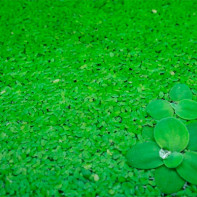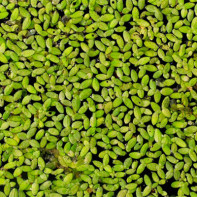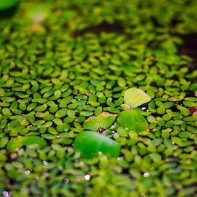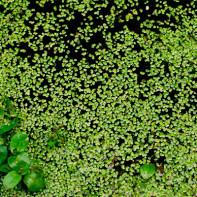Ryazka: medicinal properties and contraindications
In summer at the ponds and in the backwaters of small lazy rivers the surface is covered with a solid green carpet. It sways unhurriedly in the wind, reluctantly parting in front of the geese entering the water. Zealous hosts use a net to scoop up the green mass and take it in carts to the bird farms, where they feed the ducks. They grow 1.5 times faster on such food. Few people think about the fact that rowan is suitable not only for bird feed, but also harbors many useful properties used in folk recipes. Herbalists are well aware of them and part of the time in the summer necessarily devote to the collection and harvesting of this useful product.
- How it looks and where it grows
- Types
- Gathering and storage
- Chemical composition
- Therapeutic properties of bryaska
- Murderflies in folk medicine
- Psoriasis and vitiligo
- Glaucoma
- Nephritis
- Allergy
- Impotence
- Herbal mixture for treating thyroid nodules
- Poultices
- Infusion and Tincture
- Duckweed in cooking
- Green sorrel and casserole soup
- Vitamin salad
- Green oil
- Contraindications to use
What does it look like and where does it grow?
If you examine one plant closely, you will find that it consists of a leaf lamina, from which a whitish root runs down, and new sprouts develop on the sides in the form of the same leaf. Over time, they will reach the right size and separate from the mother plant. This is how a colony of cassowaries reproduces and grows. It belongs to the Aroidae family and lives for several years. Flowering can be seen very rarely, small unsightly flowers are almost invisible on a green background.
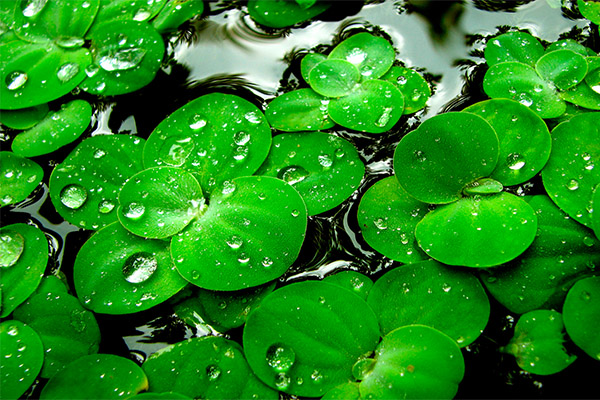
Representatives of the species are found in all countries, except for the most northern zones. They do not survive in salt water, spreading only in fresh water bodies. The peculiarity of the plant is that it doesn't need a contact with soil to grow and develop, it obtains everything it needs by photosynthesis, absorbing useful substances through its small translucent floating roots.
The first plants begin to develop as early as +6 degrees, the main mass appears only when the air temperature reaches +24-28. Caddisflies do not tolerate frosts and die immediately.
Nature has given the bryoza a unique opportunity to successfully survive cold weather. In the fall, a large proportion of starch accumulates in the composition of the leaves and a turion bud is formed. Since the new formation is much heavier than water, it sinks gently to the bottom and quietly overwinters, rising again to the surface as soon as the temperature becomes comfortable.
Worth considering: When breeding cassock in decorative ponds, it will be very difficult to remove it. It is very tenacious and quickly sprouts again.
Sometimes the plant is planted in the aquarium, where it quickly fills the top layer and becomes an additional source of vitamins for the fish, which are happy to eat it or collect from the underside of the leaves of small particles of dried food.
Species
So far, 14 varieties are known, distributed from the tropics to northern regions. It is possible that with time new species will be discovered. On the territory of Russia the most widespread are 4 species.
- Small has a leaf diameter ranging from 2.5 to 6 mm. It reproduces very quickly. One plant, not yet completely separated from the mother plant, already gives a new offspring by itself. It has an amazing level of survivability. When removed from water for a short time, it dries out, but if it has been in the air for a short time, it revives again, it is worth to return it to its usual environment. The structure of the plant is primitive. From the center of the leaf blade down goes a stub with a thickening at the end. It is 4-5 times longer than the leaf and acts as a feeder and stabilizer, not allowing the cassock to turn over on a wave.
- Duckweed triplet is easy to identify by its appearance, it is not divided into mother and daughter, and woven into a single mesh, which is held under the surface of the water. In the winter it also hides at the bottom of the reservoir.
- Humpback caddis has an interesting structure. Its additional buoyancy is due to a small air chamber, located in the cavity of the leaf and dissected by septa. Outwardly, it looks like a large-cell foam core. Each plant contains a large amount of protein with minimal fiber. It is considered an excellent complement to traditional feed, slightly exceeding them in nutritional value, and is included in the diet of waterfowl. Interestingly, the presence of caddis in a body of water prevents it from rotting. This quality is used, repopulating the humpback species in aquariums and ponds, where fish are bred on an industrial scale.
- Polycornea common differs from the other species by the presence of several roots in one plant at once. The other characteristics are very similar.
Wolffia rootless is not typical for our country, it was found in the Moscow River. There is an assumption that it got there as an aquarium resident. It differs from the others by its elemental structure and lack of root.
Most often found small cassock, it is intertwined with the humpback, and to discern from the shore, which species inhabited the pond, it can be difficult.
Collecting and storing
All species have medicinal properties. There is no need to collect them separately, nor is there a certain time when the properties of the plant are maximized. You can go hunting for it throughout the summer, taking over the warm autumn days.
Important: to collect cassava can be only in ecologically clean water bodies.
For the convenience of the process with a net on a long handle and a bucket. The collected material is washed in 3-4 waters, carefully remove impurities, let the excess moisture drain off. The resulting mass is spread out in a thin layer on paper or cotton cloth. Choose a shady, well-ventilated place to dry. Direct sunlight destroys the fine structure, reducing the medicinal properties of the plant several times.
Chemical Composition
The leaves of the cokeweed contain a whole complex of useful substances:
- vitamins A, C, E, B, PP;
- tannins;
- organic acids;
- proteins;
- fiber;
- polysaccharides;
- amino acids;
- flavonoids;
- phosphorus;
- calcium;
- magnesium;
- cobalt;
- vanadium;
- copper;
- bromine.
And they are in forms and compounds that are easily absorbed by the body almost without waste.
Therapeutic properties of bryophytes
This plant, of course, is not ginseng, but there are certain benefits from it. First of all, its nutritional properties are used, the powder from dried raw materials is added to prepared dishes for the treatment of anemia and its prevention. Such a supplement is given to children with poor weight gain or hyperactive kids, who need much more energy than they get with food. Also, rowanberry has:
- antipyretic;
- choleretic;
- tonic;
- analgesic;
- immunostimulating effect.
There are almost no contraindications to its use, it does not cause allergies, is well digested, does not provoke the development of obesity.
Murderflies in folk medicine
Duckweed is used in several ways, making infusions, decoctions, using it as a compress, a food additive. It is part of the recipes that alleviate the symptoms of skin diseases, abnormalities of the cardiovascular and genitourinary systems. Infusions are used as an antihelminthic, general tonic. A good result gives the treatment of couch grass in conjunctivitis, gastrointestinal disorders, rheumatism, gout, allergic reactions. Adding duckweed to the food restores male strength, increases physical endurance, promotes concentration.
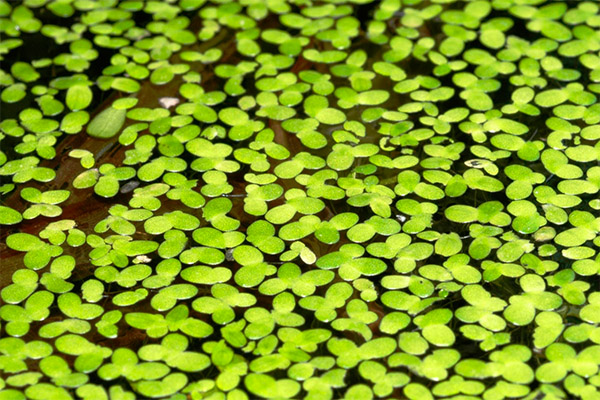
Duckweed is used in dried and fresh form. It is included in decoctions, ointments, tinctures. The choice of dosage form depends on the nature of the disease and individual body reactions.
Psoriasis and vitiligo
To prepare the remedy, cassava and good flower honey are used in the proportions 1:1. Fresh cassock in an amount of 1 bucket washed and dried, ground into a fine powder. Then mix the resulting mass with honey and form small balls weighing 2 grams. It is recommended to use a pharmacy scale to determine the exact dosage. Balls are dried in a cool shady place and put in a tightly closed jar. Store in the refrigerator on the vegetable shelf. The treatment is carried out 3 times a day for six months. Then a break of 60 days and continue the next course. To achieve a complete cure will take 5-6 years.
Rye can also be used for infants suffering from these skin diseases, but for them prepare a decoction of 1 tbsp raw material and a glass of water. After boiling, the mixture is kept on the stove for no more than 3 minutes. Then remove to a wooden board or mat, cover the pot with a towel and infuse for at least an hour. Strain the remedy is given to children over 1 year, 1 tbsp. spoon 4 times a day.
For external use, prepare an ointment consisting of 9 tbsp. tablespoons of dry material and 10 g of melted butter. Both components are thoroughly mixed until homogeneous and kept in a cool place, smearing the affected areas of the skin. The same remedy is effective to soften the nose during rhinitis. In otitis media, turundas soaked in the ointment relieve pain, suspend the inflammatory process.
Glaucoma
In this disease, a complex therapy is recommended, including medications aimed at suspending the destructive processes, and herbal gatherings to maintain the level of immunity. An aqueous infusion is prepared only from fresh rowanberry. In order not to interrupt the treatment, a tincture of herbs in vodka is stocked in advance for the winter period. To prepare take 2 tbsp. spoonfuls of dried cocksfoot and a glass of vodka. The mixture insist 4 days, kept in a dark place away from sunlight and heating appliances, take 10 ml 3 times a day, pre-mixed in 1/4 cup water.
Nephritis
The diuretic and anti-inflammatory effects of rowan are enhanced by burdock seeds. This remedy is used in dry form with plenty of water. Dried ground cocksfoot and the seeds are taken in equal proportions, mixed, take 1 teaspoon before each meal for at least 20 minutes. The course is 30 days.
Note: the first signs of improvement come only after 2-3 weeks of taking the remedy, because it has a cumulative effect.
Not recommended for children under 5 years of age.
Allergy .
Most often it is manifested in the period of flowering of plants. But you can not sit all summer in a locked apartment, depriving yourself of the joys of communicating with nature. She also offers a simple and effective way to combat allergic reactions of mild and moderate degrees. With rapid swelling of the respiratory tract, cassava will not help, you will have to turn to strong medications. To relieve minor symptoms and discomfort associated with allergies, it is enough to pour a glass of water over a rowan berries and infuse for 1 hour in a thermos. The infusion should be taken 100 ml 4 times a day before meals.
Impotence
Pharmacy remedies give a quick, but short-term effect, having a whole list of contraindications and side effects. One of them is the negative effect on the cardiovascular system. Dried ash gradually restores the lost functions, without harming the rest of the body's systems. For treatment it is enough to eat in the morning 2 tsp. spoonfuls of a mixture of powdered cassava with honey. For convenience, you can roll these ingredients into 1 cm balls.
Herbal mixture for treating thyroid nodules
The endocrine system is difficult to treat because it is difficult to balance the production of hormones. Often such problems lead to surgery. To avoid surgical intervention, it is recommended to use in the complex treatment of herbal assemblies, acting gently and sparingly, without disrupting the function of the gland. To make a collection will need one part each:
- cocksfoot;
- woodruff;
- cornflower;
- violet;
- burdock root;
- stargazer;
- yarrow.
Grind the herbs, mix them. Decoction is made from 1 tbsp. mixture and a glass of water. First, the raw material is poured and left to stand for an hour. Then it is placed on a water bath for 20 minutes. The cooled decoction strain and refill with boiled water to the original volume. Take a day in three equal portions. After 2 months, be sure to pass an ultrasound scan and take tests. After a 14-day break, the course is repeated. To consolidate the positive dynamics will need about six months.
Poultices .
Cooked from the crushed fresh pulp, boiled for 2-3 minutes in boiling water. Then the ruffle is kneaded, wrapped in cotton cloth and used to relieve pain in the joints, hemorrhoids, insect bites.
Infusion and Tincture
Rye does not like prolonged heat exposure, so to prepare medicines try to immediately infuse it with boiling water and cover with a towel or mix with an alcohol-containing liquid.
A peculiarity of the infusion is a short shelf life. It is stored for only one day, then loses its useful properties. It is better to prepare before use and in small quantities. There are few restrictions on its use, the remedy can be given to children and pregnant women after consulting a doctor.
Tinctures are characterized by a longer process of preparation, but will be stored in a dark cool place for almost a year. To prepare it, you will need 1 tsp. in 50 ml of vodka or alcohol, diluted to 45%. You can use double purified moonshine. Infuse for a week, then strain and store in a tightly closed jar or bottle. Do not freeze or heat. The dosage for intake is 20 drops, the frequency - 3 times a day. It is used in the treatment of:
- cancer;
- bronchial asthma;
- vitiligo;
- allergies.
Do not drink in pure form, must be diluted in 1/3 cup warm water.
The tincture is also useful for chronic edema, catarrhs of the upper respiratory tract, runny nose, hives, iodine and iron deficiency, avitaminosis, malaria, diabetes.
Ryaska in cooking
Today's stores are amazed by the abundance of food. It's a pity that in the first lines of many products in the list of substances are dyes, stabilizers and flavor enhancers. The usefulness of these treats is doubtful, but there is a lot of harm. It is better to get vitamins, too, not in the form of pills, but to create an internal supply of natural products.
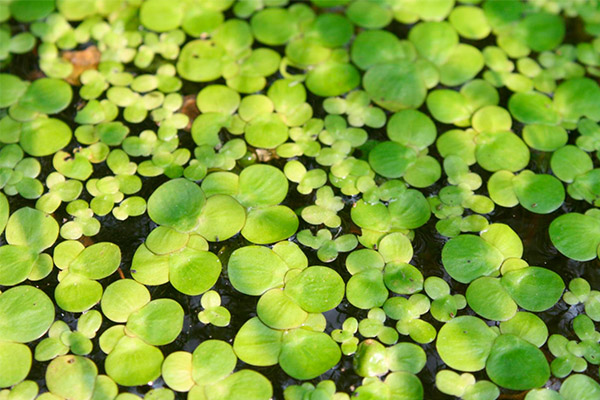
Rye is used as a food additive. It does not taste bright and is almost imperceptible in the overall combination, but the benefits of it are much greater than those of monosodium glutamate.
Interesting: In nutritional value, casserole is comparable to legumes, cereals, and leaf lettuce.
There is no need to grow it, it reproduces itself perfectly, sometimes completely covering the water surface of small ponds without a strong current. Dried ruff is useful as a dressing for borscht. Fresh leaves are added to soups and salads and used to make vitamin oil.
Green sorrel and dock ash soup
The basis is chicken broth, in it add 2-3 finely chopped potatoes, 5-6 fresh mushrooms, pre-fried in vegetable oil, and the fried onions. Greens are added 3-4 minutes before cooking. Serve in half containers, dress with sour cream.
Vitamin salad
The composition includes sauerkraut, rowan, boiled potatoes, onions and greens, garlic peppers, and dill. For dressing, salad oil is suitable. The finished mixture is sprinkled with an egg, passed through a coarse grater.
Green butter
Used to make sandwiches. 2 Tbsp. tablespoons of fresh rusks boiled for 5 minutes, put through a meat grinder and mixed with melted butter. The mixture has a pleasant lettuce color and delicate taste, increases immunity and appetite.
Contraindications to use
It is noticed that in emotionally unstable people, cassava provokes excessive irritability, and with vegetovascular dystonia can cause a sharp contraction of the blood vessels. During pregnancy and breast-feeding is better not to experiment. Individual intolerance and allergies are also on the list of contraindications.
The birch holds many possibilities that have not yet been fully explored, it is useful, and it is very easy to collect. The main thing is to avoid industrial areas and go for it in places away from factories and roads. In dried form, the plant can be purchased at a drugstore.
«Important: All information on this site is provided for informational purposes only purposes only. Before applying any recommendations, seek advice from a health care professional. specialist. Neither the editors nor the authors shall be liable for any possible harm caused by materials."

